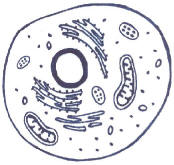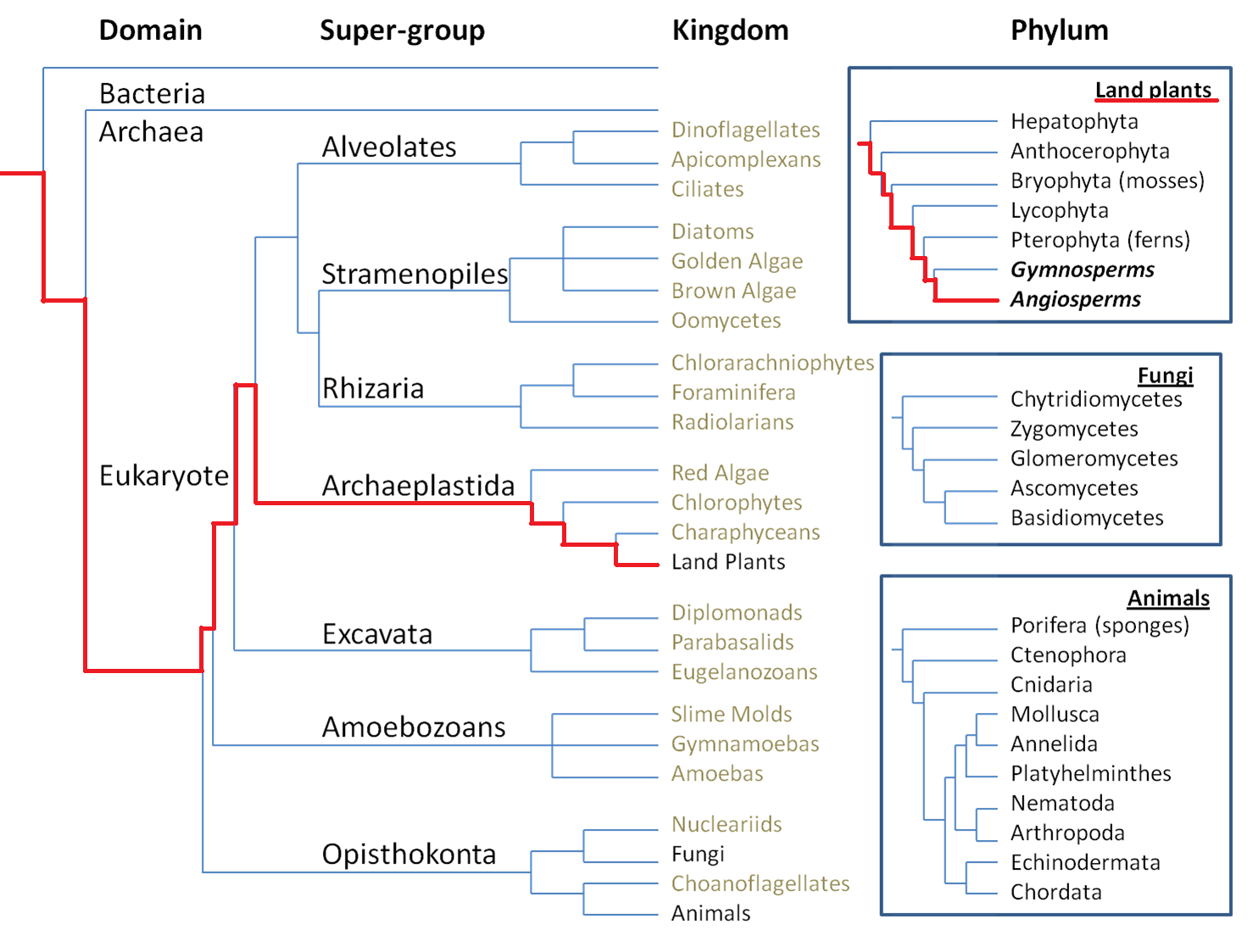Classification
Domain: Eukarya
Kingdom: Plantae
Phylum: Anthophyta
Class: Eudicotyledonae
Order: Solanales
Family: Convolvulaceae
Genus: Cuscuta
Species: Cuscuta
pentagona
Below is a description of how Cuscuta pentagona fits
into each taxonomic level.

Domain Eukarya: Organisms in this domain
have membrane bound organelles and a nuclear envelope.
Eukaryotes, like Cuscuta pentagona, have the ability to
be multicellular.
Kingdom Plantae: All members of this
kingdom have alternating
generations, and undergo photosynthesis. All plants also
have apical meristems, which enables them to continually grow,
and cellulose cell walls that give the plant support.
Phylum Anthophyta: Cuscuta pentagona belongs
to the
phylum Anthophyta, also called Angiosperms, because it has
flowers and bears fruit. Organisms in this phylum have vascular tissue that transports
nutrients throughout the plant. Plants in this phylum are heterosporous, meaning separate male and female gamates are
produced. Fruit grows when pollen, the male gamate,
fertilizes the ovary, the female gamate. The fruit
protects the seeds and helps them to be dispersed by animals.

Class Eudicotyledonae: This class is named
by the defining trait of its members, having two cotyledons.
Other characteristics of these organisms include: having flower
parts arranged in fours or fives, webbed leaf veins, and
vascular bundles arranged in a ring.
Order Solanales: The order containing
Cuscuta pentagona is characterized
flowers with 5 fused petals (Freckmann, 2000). Cuscuta's
petals are slightly separated, but still follow this
characterization.
Family Convolvulaceae: The name Cuscutaceae is
sometimes used for Cuscuta, giving the genus its own family,
however, recent studies show that Cuscuta still belongs
in the family Convolvulaceae (Cook, 2006). Members of this
family are noted for having funnel-like flowers made up of
joined petals (Freckmann, 2000).This is still a great deal of morphological diversity in Convolvulceae. Plants in this family can be vines like
Cuscuta pentagona, or trees,
shrubs, and more.

Genus
Cuscuta: Cuscuta
is derived from
the Arabic word kushkut which loosely translates to "a tangled
wisp of hair" (Cook, 2006). All dodders fit into this
paraphyletic genus (McNeal, et al. 2007).
Dodders are defined by their parasitism and yellow hair like
appearance. Dodders don't have leaves and only stay rooted
to the ground until they find a host, which is very quickly.
Species Cuscuta pentagona: The species name
pentagona comes from its five angled stem (Freckmann,
2000). Species of the genus Cuscuta are
distinguished by the gynoecium which is part of the plant's
reproductive system (Wright, et al. 2011). Cuscuta
species do not have roots and leaves so the best way to
morphologically tell the difference between species is the
reproductive structures like the style and stigma (McNeal, et
al. 2007).
Phylogenetic Trees

Tree adapted from Gerrish and Baines, 2012.
This phylogenetic tree traces the lineage of Cuscuta pentagona
from the origin of life to its phylum, Angiosperms. This
tree uses several methods of classification to determine
relationships between organisms. On this tree the closest
non-Angiosperm relatives of Cuscuta pentagona are
Gymnosperms.

This phylogenetic tree traces the lineage of Cuscuta pentagaon
from phylum to order. We start with the phylum,
Angiosperms, and can follow the tree to the class Eudicots, through a few sublevels, and finally to the order
Solanales. A known relative of Cuscuta pentagona in
the order Lamiales is sage,
which Cuscuta also parasitizes (Ombrello). This tree uses DNA to determine relatedness.
The sequences of 545 rbcL, atpB, and 18S rDNA
genes were used as well as values of 2538 rbcL sequences.
This information can be seen in the caption of the figure.
More can be read on the original site by the
Angiosperm
Phylogeny Group.
Return to Home.
Read about the habitat of Cuscuta
pentagona.